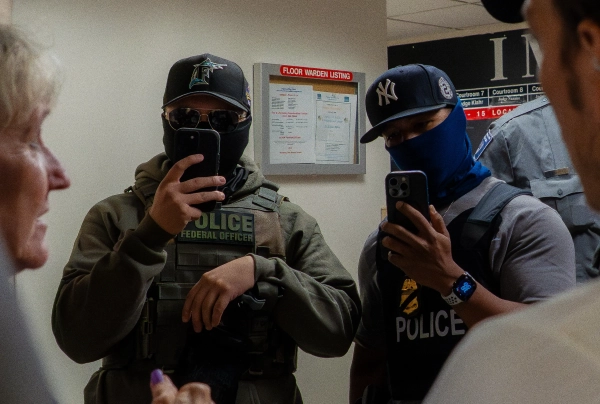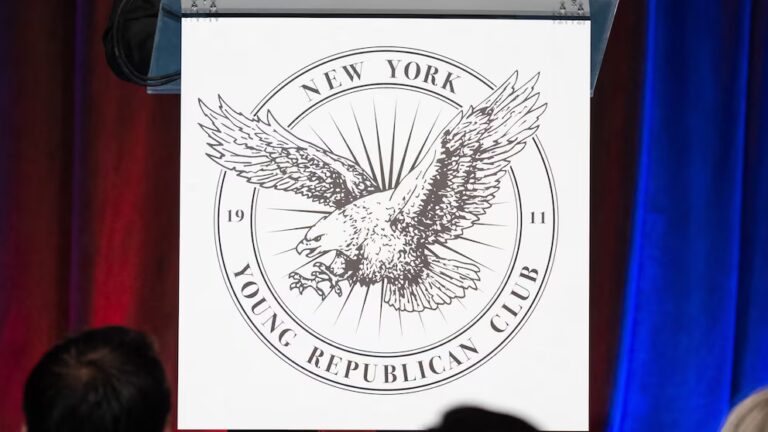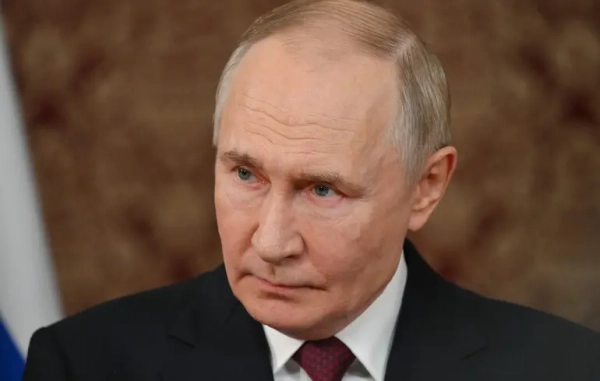“`html 
The recordings appear ubiquitous. In a Chicago suburb, handheld footage displays federal officers launching pepper projectiles at a clergyman and deploying tear gas on a mayor and a contender for Congress. Throughout the metropolis, polished video exhibits a paramilitary-style incursion into a housing complex. From the Big Apple, an abundance of images and videos reveals individuals being forced to the ground or detained within immigration courts.
These short features are shared extensively on various social platforms. You’ve likely encountered some on TikTok, X, or BlueSky. Taken as a whole, they deliver a wide view of federal agents — typically from the Immigration and Customs Enforcement division and the US Border Patrol — employing force and hostility to manage gatherings, scatter demonstrators, and apprehend immigrants.
However, the increase in viral clips also reveals something else: specifically, how both sides of the political spectrum leverage these gripping videos to craft two fundamentally opposed versions of reality. In one of these perspectives, the inherent reaction to these displays of government coercion is perceived to be rooted in feelings of indignation, aversion, and apprehension.
Conversely, within the other viewpoint, these videos evoke elation, intrigue, and contentment. For viewers who back ICE’s endeavors, such videos are deemed fitting responses to confrontational groups harassing officials of the law while they attempt to uphold current immigration regulations. The prevalent comment from these circles is a derivation of: “I endorsed this.”
“There are now numerous distinct moments that gain viral traction, impacting diverse cities and distinct populations, which amplifies its pervasiveness. Even if individuals don’t see it online, they’re apt to encounter it in news coverage afterward,” Emerson T. Brooking, the director of strategy at the Atlantic Council’s Digital Forensic Research Lab, stated to me. “Undoubtedly, certain figures within the Trump administration aren’t troubled by the viral nature of these clips; this clarifies the extensive allocation of taxpayer resources to bolster a pro-ICE narrative [online].”
Yet, these clips aren’t just circulating across social platforms; they are permeating conventional and established media, emerging as a key conduit through which varied segments of the American populace are observing, interpreting, and shaping opinions regarding the Trump administration’s second term immigration enforcement initiative. According to experts, the consequence is a process where Americans from opposing political stances employ the very same content to arrive at significantly disparate conclusions about the nature of reality itself.
Aversion and indignation: the liberal reaction to widely shared clips
As federal agents launched their immigration enforcement strategy across the Chicago area earlier this autumn, JB Pritzker, the Democratic governor of Illinois, issued an uncommon plea to his electorate — to meticulously record as many interactions with ICE and other federal officers as they could.
“Citizens of Illinois, your assistance is crucial. Grab your mobile devices, capture footage, and articulate what you witness. Distribute it on social platforms. Request badge identification and numbers non-aggressively,” Pritzker urged during a press briefing in late September. “It’s vital we inform the world about these events and affirm our refusal to accept them.”
Pritzker’s appeal represented the most distinct signal yet that viral ICE videos, captured and distributed by everyday social media participants, were transitioning into the heart of US politics. Due to these creators, the Illinois immigration enforcement campaign may be the most comprehensively documented clampdown of the current year. Similar videos have appeared and been shared in Los Angeles, New York, and Portland, Oregon, yet the sheer quantity of videos originating from Chicago is immense: as of this writing, over 18 million entries are listed under “Ice entered in Chicago” on TikTok alone.
Consider, as an instance, the ICE facility within the Chicago suburb of Broadview, which has emerged as a focal point for protests and federal violence directed at demonstrators. Over the course of weeks, federal agents have confronted and stood opposite protestors outside the facility’s primary entrance. Spectators, along with reporters, have recorded footage of a member of the clergy being struck in the head with pepper projectiles, a car pushing against protestors as it attempts to leave a driveway, tear gas deployed against protestors, including Evanston Mayor Daniel Biss, and agents pushing and tossing civilians, including congressional hopeful Kat Abughazaleh.
“Video evidence holds considerable importance — it showcases the harshness and the needless element of it,” Biss, who is also competing in the Democratic primary for Illinois’s Ninth Congressional District, told me. “There are two objectives here: one objective is to convince individuals who voted for Donald Trump [and] perhaps desired stronger immigration enforcement, that he’s overstepped. The other objective is to illustrate to individuals who fundamentally do not support what’s unfolding, the severity and extremity of the situation.”
Biss conveyed to me that the vast expanse of this category of video is a requisite element in constructing liberal consciousness, resentment, and ultimately, escalated action. They function as both factual, unedited documentation of federal implementation of force, and vehicles intended to stimulate sentiment and animosity, fostering a broader liberal recognition of unfolding events within specific American locales and suburbs. The media reporter Aaron Rupar informed me that, in turn, this generates a cycle of viral spread. “These videos effectively give life to narratives, rendering them more impactful, thus enhancing their viral appeal.”
An alternative social-media ecosystem is fueling the conservative constituency
Secretary of Homeland Security Kristi Noem’s recent trip to Portland, where an ICE facility is currently serving as a hub for demonstrations, media coverage, influencers, and private citizens, indicates that the administration is indeed counting on a different approach to viral influence to construct narratives and flood social media channels.
Accompanying Noem were a minimum of three right-leaning influencers: Benny Johnson, Nick Sortor, and David Medina, each of whom dedicated days promoting the administration’s strategy, enhancing Noem’s portrayal of Portland as a “hellscape” requiring federal intervention, and recording content to corroborate that perspective. They are just a handful of the numerous influencers who have filled the area.
Wired’s Makena Kelly identified it as a “symbiotic” version of political messaging and content production last week: “these creators don’t just amplify the White House’s messaging, they manufacture the evidence to justify it.”
Brooking, from the Atlantic Council, revealed to me that while assessing the scope of these videos is challenging, the extent of time and effort the Trump administration allocates to creating viral videos and related content is remarkable. “The administration’s strategy demonstrably aims to maximize the generation of content,” he confided. “The extent to which ICE is occasionally being assigned to produce their own content, in addition to public relations teams and the additional funds dedicated to enforcement… this constitutes an unprecedented development within the United States.”
He emphasized scenes from Portland, Chicago, and other urban centers featuring federal agents engaged in enforcement activities while being accompanied by videographers or photographers: utilizing selfie sticks to capture diverse perspectives of an arrest or heated confrontation, and consequently disseminating them. More recently, that’s grown to incorporating right-leaning influencers to record their individual footage, either alongside immigration teams or acquiring exclusive entry to facilities or arrests.
These videos, by design, exhibit greater refinement and premeditation — designed to present favorable depictions of the agents implementing enforcement actions. Alternatively, they chronicle the same interactions as videos originating from the initial sphere — yet these versions are disseminated to incite and amuse audiences that embrace the policies. And concerning that secondary objective, ample enthusiastic viewers exist. Straightforward social media searches on X and TikTok further unveil numerous supportive perspectives, boosted by well-known right-wing and conservative social media participants and commentators. It represents another example of “governing for the gram,” as the liberal writer Brian Beutler articulated this week: “a closed loop, where internet-corrupted individuals in positions of authority abuse their power to enthrall their strange online followers, and those followers act online in ways intended to motivate those same perpetrators to further push the boundaries.”
Naturally, discerning the degree to which these accounts are authentic versus the extent to which bots or algorithmically adjusted content are involved has become increasingly complex. However, this alone emphasizes the varying manners through which social media silos portray and circulate critical and sympathetic narratives.
Then, there are instances of unanticipated alignment. Possibly the most widespread among these clips, showcasing a woman being forcefully thrown down by an ICE agent at a New York courthouse in the presence of her child, was recorded by a reporter representing the right-leaning media outlet Timcast, connected to the influencer Tim Pool. Initially, it simply constituted another piece of content intended for those audiences, depicting a “hysterical wife of [a] detained alien” who is forcibly pushed to the ground by agents. This initial clip in the sequence only registered approximately a million X users.
However, the aggressive interaction that attained viral status within a subsequent tweet broke free from those constraints — amassing almost 20 million engagements and becoming headline material throughout the following week in September. The clip likely wasn’t intended to garner so much attention, yet it succeeded. The agent involved was temporarily suspended (though subsequently reinstated). While it went viral and received undesired publicity, it was eventually eclipsed by an apparently constant flow of analogous content.
Collectively, these events illustrate the exceptional and precarious nature of the moment: In the past, one viral video had the potential to ignite outrage, demonstrations, and activism. At present, the public consciousness is divided into two distinctly disparate realms, both yielding a perpetual stream of viral video content.
“I don’t anticipate that a single video will emerge. There is a plethora of content,” Brooking explained. “The White House and ICE communication teams are acutely conscious of this. … As long as they continue producing their distinct content and stories, this will persist as an endless exchange.”
“`
Source: vox.com






